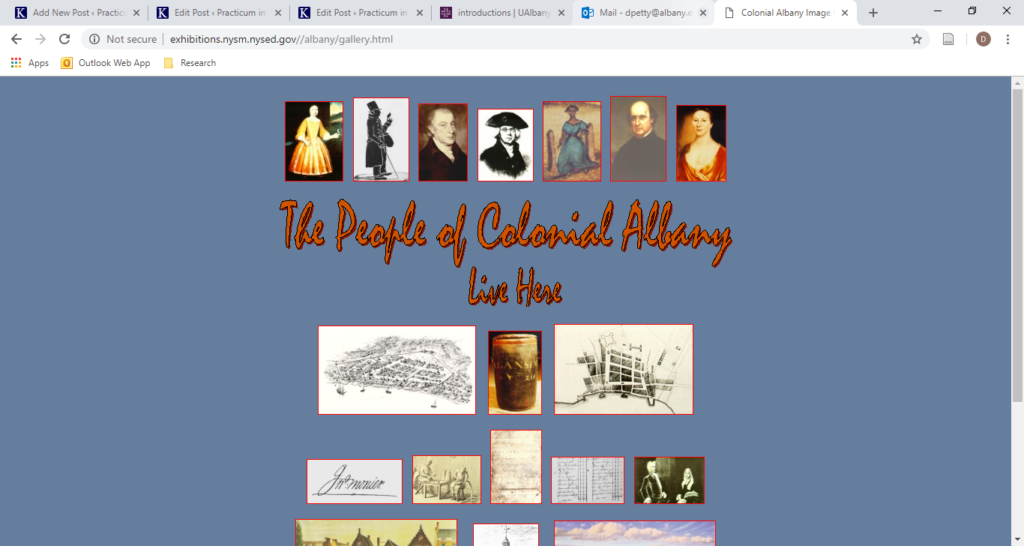The People of Colonial Albany Review
“The People of Colonial Albany: A Community History Project.” https://exhibitions.nysm.nysed.gov/albany/. Created and maintained by the New York State Museum, Albany, New York, (https://exhibitions.nysm.nysed.gov/albany/whoarewe.html). Reviewed February 5, 2019.


The “People of Colonial Albany” project is a community sourced internet archive and database. Originally started in the 1980’s by the Colonial Albany Project and led by community historian Stefan Bielinski, the “People of Colonial Albany” attempts to provide access to and organize records related to the city of Albany, NY in the 17th and 18th centuries. Highlighting the “people” of colonial Albany, the project pulls together an extensive collection of census records, death and baptismal records, legal documents, and Wills to piece together hundreds of short biographical narratives. The “People of Colonial Albany” provides an easily searchable index of names and places for the user to navigate.

While the database is far more in-depth than a simple genealogical collection, the project’s strength lies in its ability to connect the people of colonial Albany into a collection of unified networks. Each short biographical sketch is hypertextually linked together both visually showing the connections and relationships between individuals as well as guiding navigation between sketches.
Beyond biographical sketches, the project also incorporates a collection of over 5000 images, including portraits, landscapes, architectural drawings, cityscapes, and maps. The addition of these images provides an added layer of visuality to a collection based heavily of written and statistical data. Putting a face to the name helps not only aesthetically but furthers serves the projects intention to “Introduce and integrate the individual people of colonial Albany.” The People of Colonial Albany does an excellent job of bringing together information from a diverse base of sources. Working in close connection with the New York State Archives, the project is base of archival material can compete with most other early colonial databases.

While the project is an excellent point of entry into the world of the colonial era in Albany, it is by no means the conclusion. The project is limited in scope to the census records available and therefore is limited in the inclusion of particular groups. Indigenous people are scarcely covered in the archival dataset and at most black populations are listed as statistical reference points rather than distinct members of the Albany community. Beyond demographic blind spots, the project is heavily centered on the city of Albany rather than the larger county. This too is likely due to a lack of available sourcing. While the projects mission is clear in stating its desire to separate Albany from the surrounding Dutch countryside, the lack of demographic context means that the story told is of the urban, land-owning elites.
The project is also dated in its presentation. While the information is still of use, the navigation of the site itself is particularly challenging. The hypertextual connectivity of the biographical sketches establishes layers of interpersonal connections however also easily leads down a rabbit hole of hyperlinks that leaves one wondering where they are in relation to their original search. There is also a lack of uniformity on the face of the pages, the layout of each individual page and biographical sketch differs widely, leaving the user to wonder where certain information may be located. Similarly, there is a significant amount of oddly placed hyperlinked words that make it unclear clear as to where a link leads further confusing navigation.

Despite these navigational issues, the “People of Colonial Albany” project remains a powerfully research tool. Together the ease of access to biographical information, and extensive collections makes the “People of Colonial Albany” a good first step for any researcher of Albany, the Dutch, or Colonial New York.